Does YOUR horse have this ‘forgotten’ hoof problem?
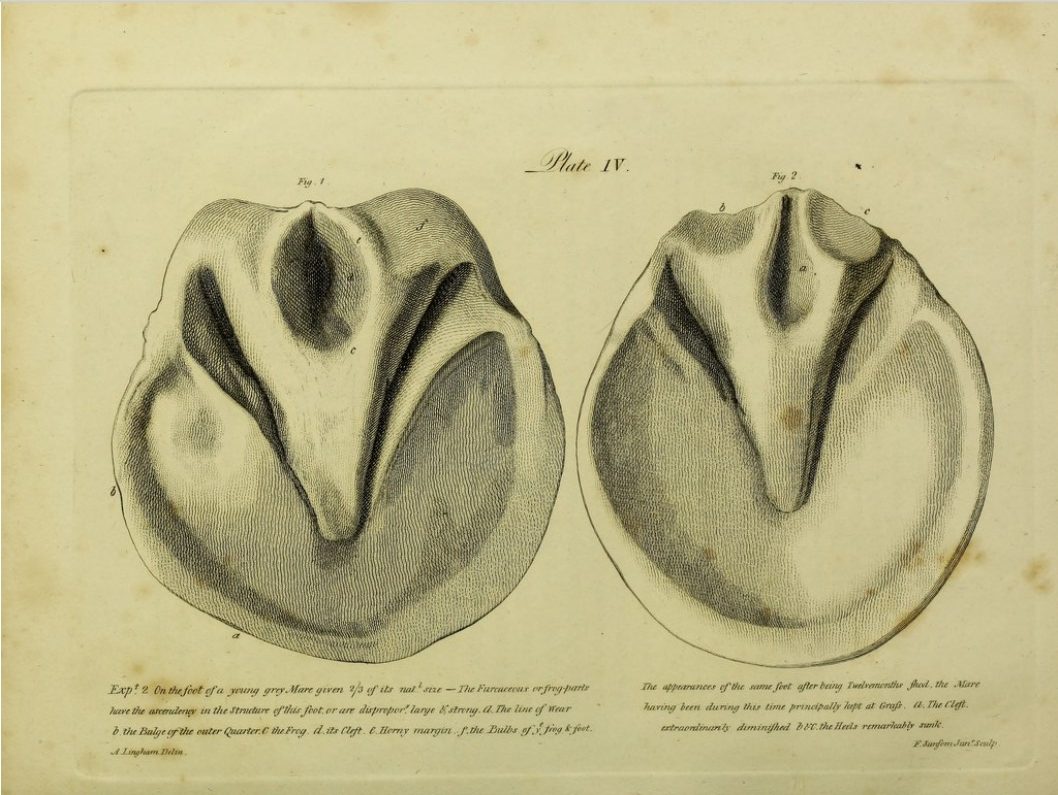
Contraction (1): What an experiment from 200 years ago can teach us today…
More than 200 years ago, a young English veterinarian realized that many horses in use were suffering from a certain hoof problem. A problem that caused (amongst other things) sore feet, stumbling, short steps and lameness.
He also described that this was the reason many horses were ‘unwilling to work’. And the reason many of them got killed, long before they reached old age.
The name of this veterinarian was Bracy Clark. He has written many books and articles on horse health, horse history, and specifically about horse hooves.
Note: At the end of this blog post you can find out where you can download some of his publications – for free!
There you can also post your questions and comments.
The problem still exists
Sadly, the hoof problem he discovered still exists today.
It is still a leading cause for hoof problems and lameness in horses today.
Many, many horses suffer from it. And many of those horses get killed very young, because of it.
But it seems like nobody is talking about it anymore…
What is the problem?
The problem is called ‘contraction’, or ‘contracted hooves’.
This means that the hoof gets smaller and narrower. And, as you can imagine, that means that everything inside the hoof gets ‘squeezed’. Such as the tendons, the frog, the sole, the hoof bone, the navicular bone, and so on.
There is also less blood circulation – often meaning hooves that have very little growth. The hoof horn gets crumbly and ‘falls apart’.
How can you recognize it?
A contracted hoof is narrower than it should be.
This is usually most visible in the back of the hoof. Around the bulbs and the frog.
The frog is smaller than it should be. The ‘groove’ in the middle of the frog is very narrow. Sometimes it’s even gone, or it’s just a small slit.
The bulbs are not in a straight line but squeezed inwards.
Especially in front hooves the whole hoof looks more like an oval (an egg or even a pear) than a circle.
What can cause contraction?
Possible causes of contraction can be:
- The hooves are too dry over a long period of time (hooves need some moisture to stay supple).
- Any condition that causes long-term pain in the hooves, especially in the back part of the hoof (the horse doesn’t want to put weight on the heel/bulb area).
- And the most common cause for contraction: shoeing.
Bracy Clark’s experiment
Bracy Clark had started to suspect that putting iron shoes on a horse’s hoof was the cause for many of the problems he saw as a veterinarian every day.
But how could he prove that shoeing has a negative effect on hooves?
The solution was a very simple but ingenious experiment.
He took a plaster cast of the hoofprint of a 5 year-old mare that had never had shoes on.
He then did the same after one year. And then again after 2 years and 3 years.
The changes caused by shoeing were even worse than he expected.
The hooves changed shape dramatically, especially around the bulbs and the heels.
The frogs became thinner and thinner.
The bulbs became much smaller.
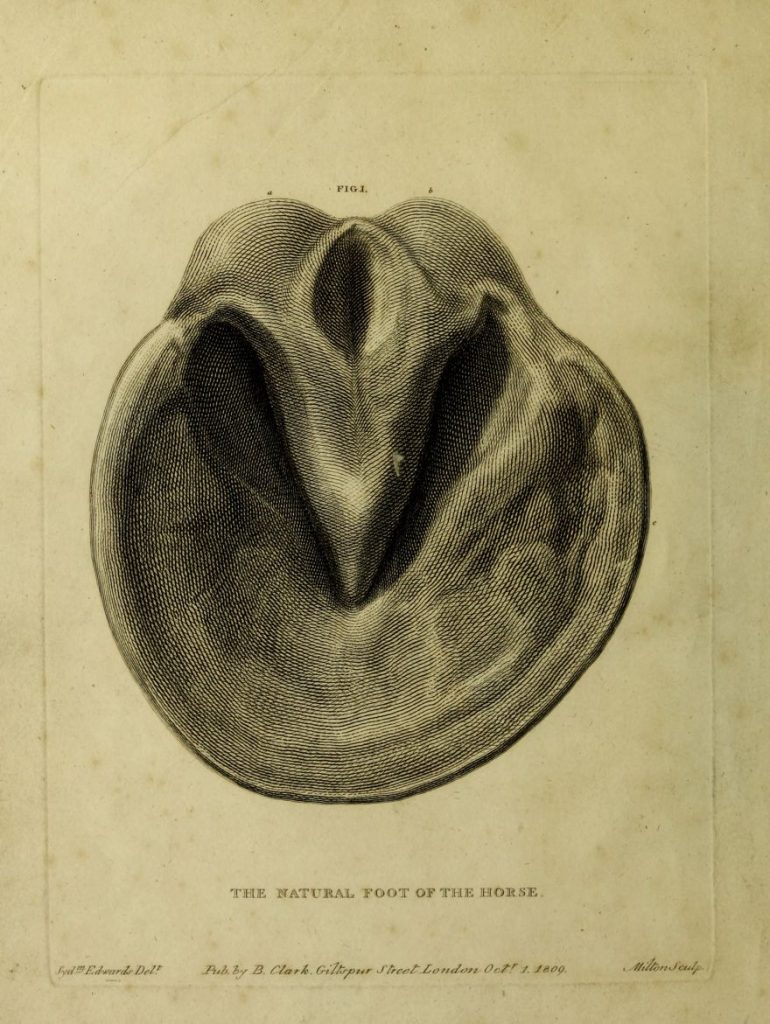
The Natural Foot of the Horse (B. Clark, 1809)
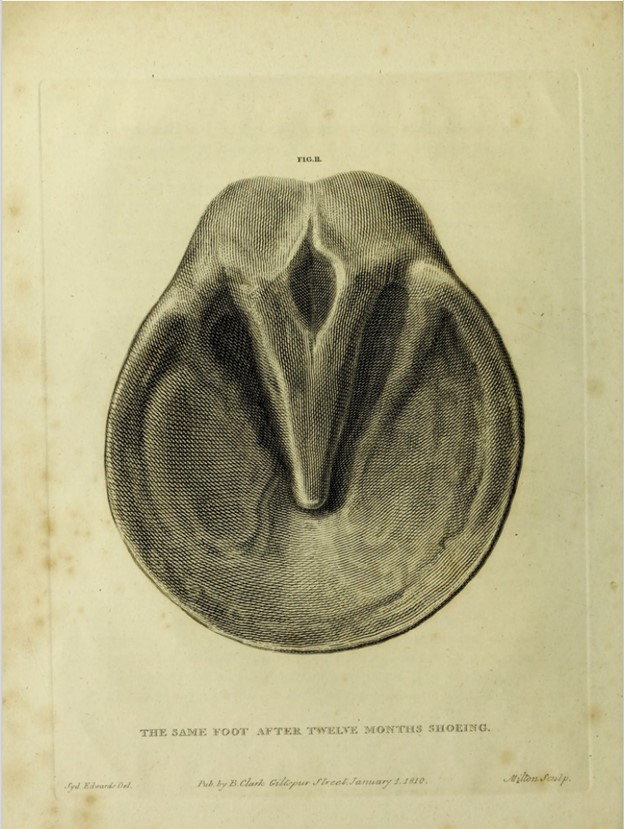
The Same Foot after Twelve Months of Shoeing (B. Clark, 1809)
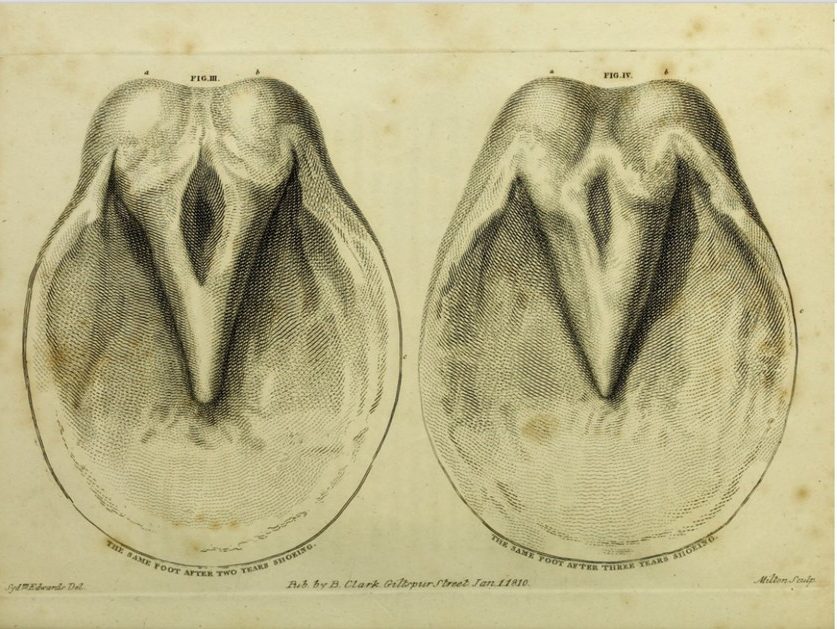
The Same Foot after Two Years Shoeing. The Same Foot after Three Years Shoeing. (B. Clark, 1809)
Bone changes
There was, of course, no video at the time when Bracy Clark did these experiments. He couldn’t film differences in the way the horses moved.
He did, however, look at the coffin bone (the pyramid-shaped bone inside the hoof). And how different that looked in a horse that had gone with shoes, or one that never had shoes on.
In other words: shoeing does not only change how the hoof looks on the outside – it also affects all structures on the inside of the foot.
Even the bones change in a horse with shoes!!
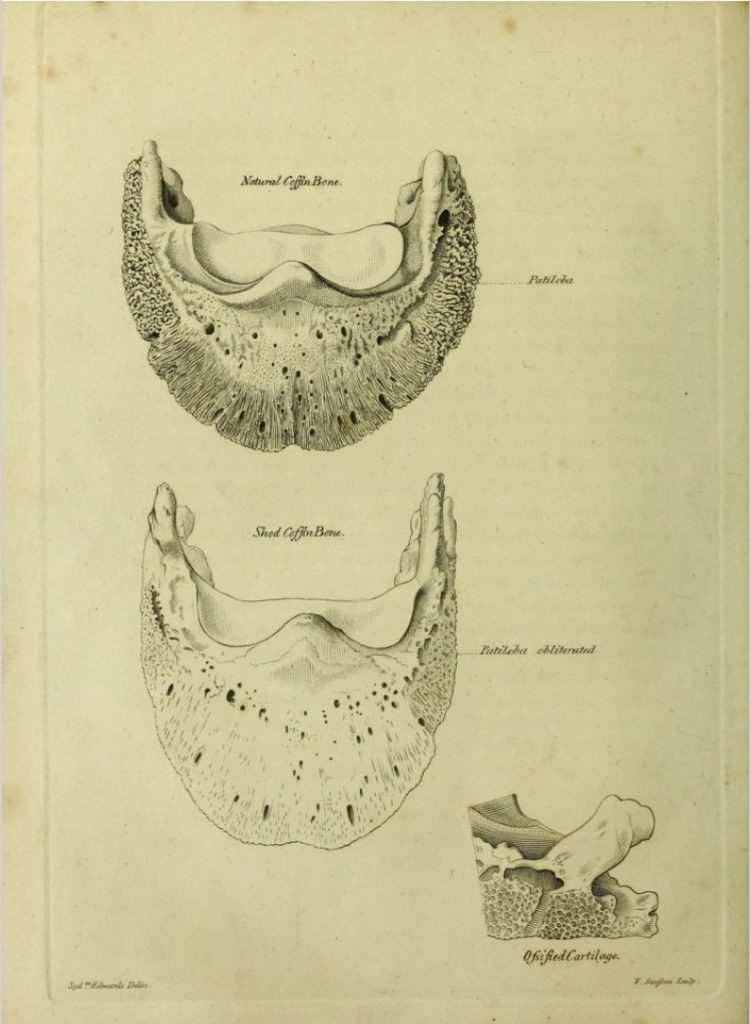
Top: Natural Coffin Bone. Bottom: Shod Coffin Bone. (B. Clark, 1809)
What is the remedy?
As Bracy Clark demonstrated, shoeing is the most common reason for contraction.
The obvious remedy is then very easy: take the shoes off.
These days we have learned a lot about how to keep horses comfortable after taking the shoes off.
We also have a choice of all kinds of hoof boots, in materials that Bracy Clark only could dream about.
Unfortunately, many horses get shod from a very young age.
By the time the first problems appear, the feet are so contracted that they never will get back to the form they were supposed to have.
So, if you want to avoid contraction, the best is to never put shoes on your horse.
What happened to Bracy Clark?
Clark hoped that his veterinary colleagues would embrace what he found and spread the word. And, by doing so, not only relieve the suffering of countless horses, but also save their lives.
Unfortunately that isn’t what happened. His findings were not accepted – on the contrary, he was ridiculed. And his experiments and findings were not mentioned anymore, and mostly forgotten after a while.
All truth passes through three stages: First, it is ridiculed; second, it is violently opposed; and third, it is accepted as self-evident.
Arthur Schopenhauer, 1788 – 1860
Do you want to find out more?
If you would like to find out more about Bracy Clark and his publications:
https://en.wikipedia.org/wiki/Bracy_Clark
Luckily, many of his books are in the Public Domain today (meaning you can download them for free!).
For example:
‘A series of original experiments on the foot of the living horse, exhibiting the changes produced by shoeing, and the causes of the apparent mystery of this art’ Date: 1809
https://wellcomecollection.org/works/e2tasvtt/items?canvas=132
‘Hippodonomia, or the true structure, laws, and economy, of the horse’s foot: also podophthora, or a ruinous defect in the principle of the common shoe detected … with a proposition for a new principle of shoeing’ Date: 1829
https://wellcomecollection.org/works/hnq43zgt/items?canvas=10






